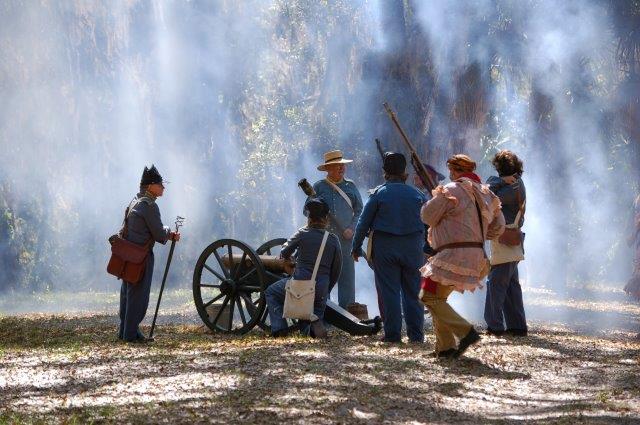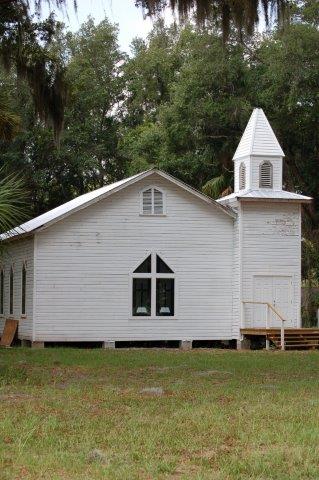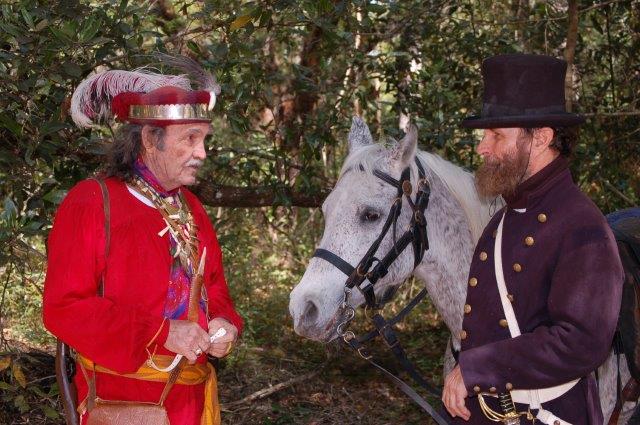The History of Citrus County Florida

Citrus County's Early History

The first humans arrived in Florida about 14,000 years ago. They found a land that extended far out into the Gulf of Mexico. The present Citrus County shore line was at that time almost 200 feet above sea level. Very little is known about these early nomadic people.
The Crystal River State Archaeological Site gives us the first glimpse at the earliest settlements in Citrus County. For 1,600 years (200 B.C. until A.D. 1400), Indians of the Deptford culture appear to have occupied this site. The 14 acre six mound complex is one of the most imposing prehistoric ceremonial centers on Florida's west coast.
When exploring the documented history of Citrus County, it is a relatively short time span of less than 190 years. The first pioneers arrived in the 1810s. Only after the Civil War did more people move into this frontier region between the Withlacoochee River and the Gulf of Mexico.
Hernando DeSoto
The Spanish explorer Hernando DeSoto visited Citrus County around 1539, as part of a long trek through Florida and much of the future Southeast United States. Indian burial mounds in the area contain artifacts of that expedition. The County of Hernando, named in honor of DeSoto, was established On February 27, 1843.

In 1885, the census ranked Floral City twice as bigger as Miami, with a population of 300 persons to Miami's 150. In that same census, Mannfield, which was to become the county seat of Citrus County a few years later, had a population of 250 and Crystal River had a population of 200. The town of Tompkinsville, which would later become Inverness, had a recorded population of 30.
On June 2, 1887, Florida Governor E. A. Perry signed into law a bill dividing Hernando County into three counties, Citrus to the north and Pasco to the south. Legislation stipulated that the town of Mannfield would be the temporary county seat of Citrus County as it sat in the geographical center of the newly created county.
The establishment of Citrus County meant a permanent county seat needed to be named. The matter was to be put to vote but it took several years and a midnight raid before the issue was finally settled once and for all. The battle raged with Mannfield being favored by one side and Inverness (formerly Tompkinsville) being favored by the other. A majority vote in 1891 finally approved the move to Inverness but the opposition had no intention of giving up ... not until a midnight raid in which the courthouse and everything that had to do with County government - records, court furniture and fixtures - was "stolen" and moved to Inverness by horses and wagons - including Captain (W.C.) Zimmerman, the County Clerk, who refused to move from his office and was picked up with his chair and desk and transported in a wagon to the new County Seat!

During the Civil War, the Yulee Sugar Mill was operated on the Homosassa River, supplying sugar to the Confederacy. Around the same time, Citrus became the big industry in the eastern part of the county, helped along when the Florida Orange Canal and Transit Company built a canal from the groves to the Lake Panasoffkee railhead in Sumter County allowing fruit to be barged through the canal and along the Withlacoochee River. The big freeze in 1894-95 ended the citrus industry in the county just at the time that phosphate was discovered in the area and the worker population swelled until World War I terminated the flow of phosphate to European markets, the mines closed, and the population plummeted.
Historical Areas and Attractions within Citrus County
The Crystal River State Archaeological Site
A Florida state park, six-mound complex that is the largest of the Deptford Period in the southeastern United States, is designated a National Historic Landmark. The natural resources of the region which attract hikers, divers and fishing enthusiasts today, also drew pre-Columbian mound builders who favored the ideal climate and plentiful game and fish. The Crystal River State Archaeological Site is located at one of the longest continuously occupied sites in Florida. The park contains the remains of a large Indian village and several ceremonial and burial mounds. An excellent museum has exhibits explaining the site and its former inhabitants.
Coastal Heritage Museum
The town of Crystal River is home to the Coastal Heritage Museum, housed in the 1939 city hall. Tour guidebooks of the area and information about the history of Crystal River are available at the museum. Nearby is Heritage Village, a charming cluster of antique and gift shops in historic buildings, and Conversations Tea Room, which serves up a light lunch and gourmet teas on stained glass tables made in an artist's loft that hangs above the dining room.
Homosassa
Located on U.S. 19 is the town of Homosassa, home of the Yulee Sugar Mill State Park, Homosassa Springs State Wildlife Park, and Old Homosassa, a delightful fishing village. Homosassa has been considered a sports lover's paradise since the turn of the century and was a destination for wealthy and prominent Americans such as Grover Cleveland, Thomas Edison, John Jacob Astor and Winslow Homer. The sugar mill ruins in Old Homosassa include remains of the boiler, chimney and mill machinery that were used to process sugar cane before the Civil War. Interpretive signs explain the history of the site.

Also in Old Homosassa are artists' shops, marinas, seafood restaurants, small motels and charter fishing services. At the Riverside Inn, visitors can take a guided pontoon boat upriver and view manatees in their natural habitat or simply sit on a shaded bench and watch the fishing boats go by. Across the River is K. C. Crump's, a fishing lodge since 1906 and now a fine seafood restaurant. A shuttle boat ferries guests from one side of the river to the other. In the middle of the river is Monkey Island, where chimps play on a miniature lighthouse.
Homosassa Springs State Wildlife Park
Probably the area's premier attraction is Homosassa Springs State Wildlife Park, which serves as a refuge for injured and orphaned manatees and as a showcase for native species of plants, animals and fish. At the state park's main entrance, visitors board a pontoon boat from which they may catch a glimpse of raccoons, deer, otters, ospreys and alligators. An underwater observatory gives a spectacular view of manatees and fish upclose. Don't miss the manatee feeding demonstration.
The one non-native animal in the park is Lucifer, the county's much beloved hippopotamus. Lucifer lived at the park when it was a private attraction, and when the state purchased the park and wanted only native Florida animals in residence, the county's citizens petitioned the governor. Lucifer was named an honorary Florida native, and remains in the park to delight his visitors.
Inverness

Inverness boasts the Citrus County Courthouse as its centerpiece, with its traditional clock tower and copper cupola. In the midst of renovation funded in part by state historic preservation grants, the courthouse overlooks a recently renovated downtown with ice cream shops, antique stores and cafes.
A nearby railroad depot located on the Withlacoochee State Trail is anticipated to become the site of a restaurant. The century-old Crown Hotel was Inverness' first general store and now, with its British theme and authentic Victorian decor, offers 34 elegant guest rooms with brass beds, velvet chairs and old-fashioned lamps. The decor is further enhanced by a sweeping spiral staircase, crystal chandeliers and reproductions of the Crown Jewels.
Floral City
Floral City boasts many historic sites and buildings that date from the 1880s to the 1920s. Century-old oaks line the main street of this charming community, which is attracting younger families to its idyllic small-town atmosphere. Also located in Floral City is Pleasant Hill Baptist Church, one of the oldest African-American buildings in the county. Built between 1895 and 1910, the church is listed in the Florida Black Heritage Trail.
Nature Preserved
Walkers, joggers, bicyclers, birdwatchers and equestrians can find hours of enjoyment in the many thousands of acres that have been preserved in Citrus County. Chassahowitska National Wildlife Refuge and St. Martin's Marsh Aquatic Preserve are important areas for waterfowl and for the survival of the endangered manatees. The 42,000-acre Withlacoochee State Forest offers pristine trails, campgrounds, and horse stables. The recently-completed Withlacoochee State Trail offers mile after mile of paved paths for biking and hiking.
Nearly every month of the year, Citrus County offers events, from music festivals to art shows. The Crystal River Jam every November attracts country music lovers. Not to be missed is Floral City Heritage Days in December, and January is the best time of year to spot manatees. March brings the Floral City Strawberry Festival and State Fiddling Championship, as well as the Citrus County Fair. Fort Cooper Days in April reenact a battle of the Second Seminole War.
This page and all of the many pages about Citrus County Florida which we are offering you here on our site are meant to help you learn about our wonderful area. Where you build your new home is very important and we wish to provide you with as much information about the Citrus County Florida area as you need. If you have any additional questions or would like to know anything else about our area, please call us at 800-853-2363 and we would be more than happy to help you.
Information from various sources who also promote Citrus County, Florida. We thank them and share the same desire to inform you about the great area we live and work in, Citrus County, Florida.



